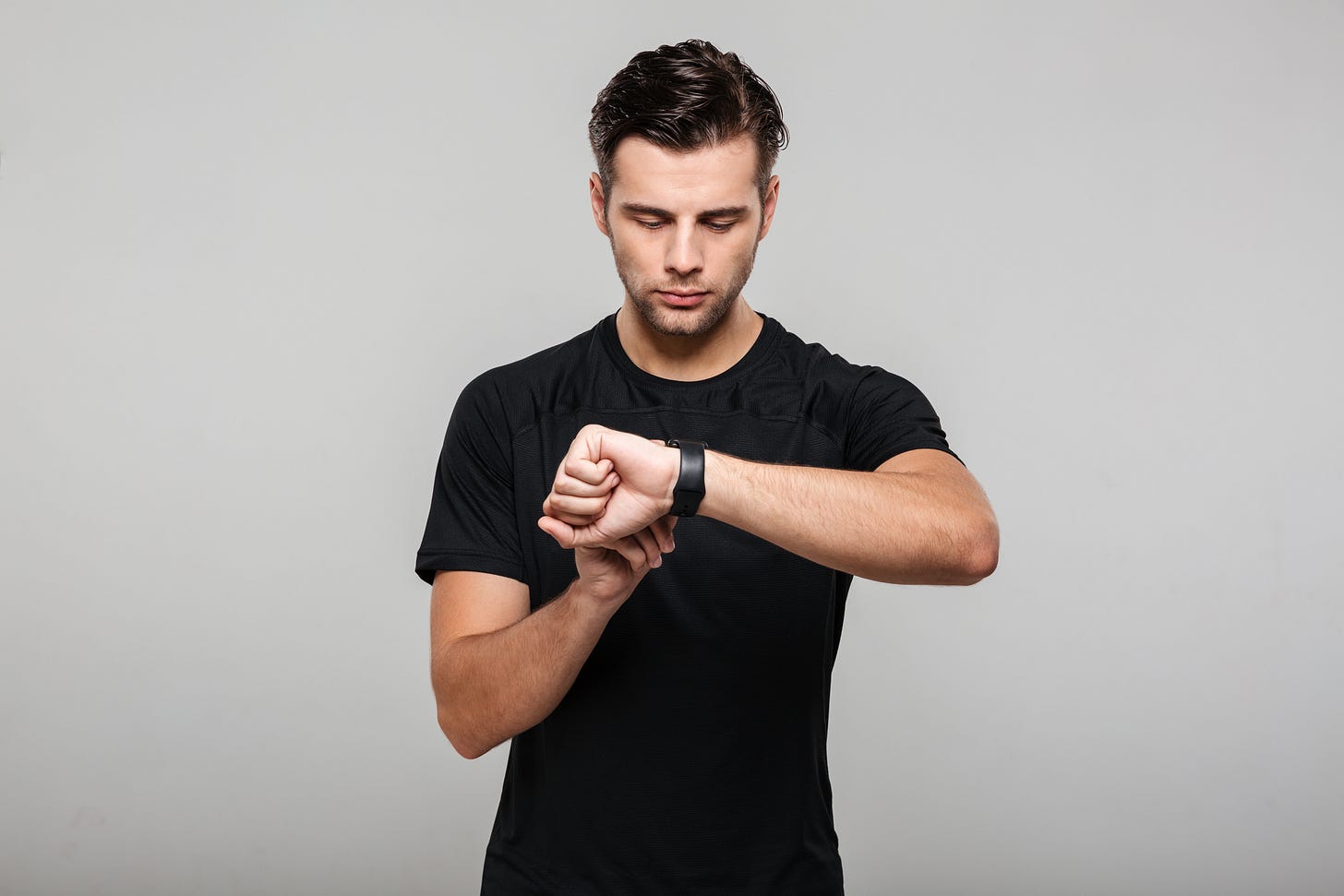Have you tried every possible fitness hack out there, only to find that none of them seem to work? Well, we have some good news for you! There's a fitness hack that's been buzzing around lately, and it just might be the match made in heaven you've been looking for: fasted state and apple cider vinegar. Yes, you read that right! And no, we're not just talking about some trendy fad diet. We're talking about a scientifically-proven method that can help you achieve your fitness goals in no time. So, buckle up and get ready to learn all about this exciting new fitness hack that's taking the world by storm!
What is fasted-state?
Before we dive into the nitty-gritty of fasted-state workouts, let's start with the basics. Fasted state refers to the period of time when your body has depleted its glycogen stores and is burning stored fat for energy. This can happen naturally during periods of fasting, such as overnight or during prolonged periods of low food intake. But, with the right approach, you can intentionally enter a fasted state to optimize your workouts and see better results.
Now, you may be wondering, "Why on earth would I want to work out in a fasted state? I need my energy!" Well, hold on to your workout pants, because the science behind this is pretty fascinating.
When your body is in a fasted state, it produces higher levels of growth hormone, which is essential for building and repairing muscle tissue. Additionally, working out in a fasted state can increase your body's sensitivity to insulin, allowing you to more efficiently use glucose for energy.
Wait what?…
In simpler terms, working out in a fasted state can help you build muscle and use glucose more efficiently. It's like giving your body a superhero power-up before your workout. And who doesn't want to feel like a superhero?
Let me give you some more information on how long you need to fast in order to achieve a fasted state. Generally, it's recommended that you fast for at least 12 hours to fully deplete your glycogen stores and enter a fasted state. This means that if you finish your last meal at 8 pm, you could start your workout at 8 am the next day in a fasted state. However, some people may require longer fasting periods to achieve a fasted state, depending on factors such as their diet and activity level. It's important to listen to your body and adjust accordingly.
Did you know?
That fasted state helps you with:
Improved insulin sensitivity:
Studies have shown that fasted-state workouts can lead to a 20-50% increase in insulin sensitivity, allowing the body to more efficiently use glucose for energy. This can lead to better blood sugar control and improved metabolic health.Increased fat burning:
During a fasted state workout, the body is forced to rely on stored fat for energy, which can lead to greater fat burning. In one study published in the International Journal of Obesity, women who performed fasted-state workouts burned 20% more fat compared to those who consumed a high-carbohydrate breakfast before exercise.Improved endurance:
Research has shown that fasted-state workouts can improve endurance and performance during exercise. In a study published in the Journal of Applied Physiology, trained cyclists who completed a 60-minute fasted state workout showed greater endurance compared to those who consumed a high-carbohydrate breakfast before exercise.Increased growth hormone production:
Fasted state workouts can also lead to increased production of growth hormone, which is important for building and repairing muscle tissue. In one study published in the Journal of Clinical Endocrinology & Metabolism, men who performed fasted-state workouts saw a 200-500% increase in growth hormone levels.Reduced inflammation:
Chronic inflammation is associated with many health problems, including muscle soreness and fatigue. Research has shown that fasted-state workouts can help reduce inflammation in the body, potentially leading to quicker recovery after exercise.Overall, incorporating fasted-state workouts into your fitness routine can have numerous benefits. Plus, you'll have a great excuse to skip breakfast and sleep in a little longer.
How about apple cider vinegar?
Ah, apple cider vinegar. The magical elixir that seems to have a solution for everything, from weight loss to digestion to shiny hair. But, how does it actually work?
Well, for starters, apple cider vinegar contains acetic acid, which has been shown to have numerous health benefits. When consumed before a meal, it can help reduce blood sugar spikes, which can be especially helpful for people with diabetes or insulin resistance. It may also help increase feelings of fullness, which can lead to eating fewer calories overall.
Oh, and did we mention that apple cider vinegar can also boost your fitness results? That's right, when combined with a fasted state workout, it can be a match made in heaven.
The acetic acid in apple cider vinegar has been shown to increase fat burning and improve muscle endurance, meaning you can work harder and longer during your workout. Plus, it can help reduce inflammation and muscle soreness, allowing you to recover faster and get back to crushing those fitness goals.
So, the next time you're feeling a little sluggish before your workout, reach for the apple cider vinegar and get ready to feel like a superhero. Just don't forget to moderate your consumption, unless you want to spend your workout running to the bathroom instead of the gym.
But, that's not all! Apple cider vinegar has also been shown to have antimicrobial properties, which means it can help fight off harmful bacteria and viruses. Plus, it can help improve digestion by increasing stomach acid production, which can be helpful for people with low stomach acid.
And, if you're still not convinced, studies have also shown that apple cider vinegar can improve heart health by reducing cholesterol and triglyceride levels.
Did you know?
In the study on cyclists, participants who consumed apple cider vinegar before their workout saw a 19% increase in endurance compared to the placebo group. That's almost like having a personal cheering squad in your ear, telling you to keep going!
As for reducing inflammation, while the study was conducted on rats, the results showed a 60% reduction in inflammation markers in those who consumed apple cider vinegar. That's like giving your muscles a cool, soothing ice pack after a tough workout.
And let's not forget about the potential for shiny hair - who doesn't want that extra perk? Although, I can't provide any scientific data to back that up...yet.
Overall, adding apple cider vinegar to your fasted-state workout routine might just give you the extra boost you need to crush your fitness goals. Just be sure to moderate your consumption, or you might end up with a different kind of "burn" during your workout.
Applying to your workout
Fasted State Workout:
Choose a time to workout that is at least 12 hours after your last meal. ( best done in the morning )
Start with low- to moderate-intensity exercises to help your body adjust to the fasted state.
Stay hydrated throughout your workout by drinking water or electrolyte-rich beverages.
After your workout, wait at least 30 minutes before eating to allow your body to continue burning fat for energy.
Apple Cider Vinegar:
Mix 1-2 tablespoons of apple cider vinegar with 8-12 ounces of water.
Drink the mixture 15-30 minutes before your workout.
Start with a lower amount of apple cider vinegar and gradually increase as tolerated.
Use raw, unfiltered apple cider vinegar for maximum benefits.
Remember, it's important to consult with a healthcare professional before making any major changes to your diet or exercise routine.
Give it a try and see the difference for yourself! Who knows, maybe apple cider vinegar and fasted state workouts will be the secret sauce to help you reach your fitness goals.
Bonus tips & hacks
Want to burn calories like you're running a 6-minute mile pace without actually running? Try kettlebell swings! One study found that participants burned an average of 20.2 calories per minute during a kettlebell swing workout. Plus, you can keep burning calories even after you're done thanks to excess post-exercise oxygen consumption or EPOC. So skip the treadmill and grab a kettlebell for a fun and effective workout. Just make sure to use proper form and increase the intensity gradually to avoid any injuries.
Message to Readers
“Getting fit is like finding the perfect match - it might take some trial and error, but when you finally find that fitness hack made in heaven, it'll be love at first sweat!”
— The Boring Fitness








Loved this.I try and do a 10km a week never following the same route so I kinda get lost.